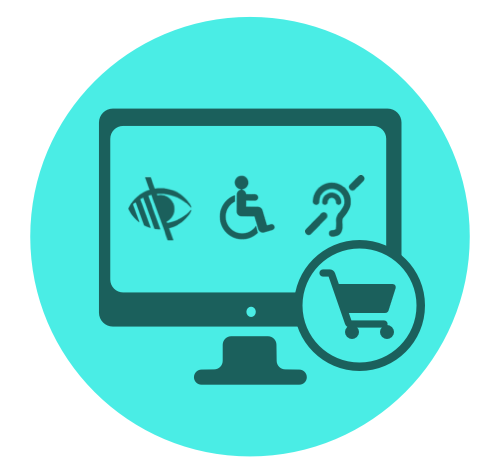
European Accessibility Act
The European Accessibility Act, also known as the EAA, brings with it a new set of requirements specifically around the accessibility of products and services in the European Union. This act will come into effect on 28th June 2025. The lead time that we currently have allows there to be a significant amount of change possible before the EAA is enforced across the EU.
However, for this change to happen in time, there must be an understanding of what accessibility, specifically digital accessibility, is. About 72% of Ireland’s leading websites are inaccessible. 85 million people in Europe live with a disability, and it is their fundamental right to access and use the internet now that it has become such an essential tool for everyday life. Digital accessibility would give them the freedom and independence to do so.
The EAA will require that services and products provided for use in the EU are accessible to all people with disabilities.
The products covered by the Act include:
- ATMs
- Ticket and travel check-in machines
- Self-service terminals
- Mobile Phones
- Computers, terminals, operating systems
- E-reading Devices
The services covered include:
- Audio-visual media services
- Transportation services
- Banking services
- Electronic communications services
- E-books
- E-commerce
The EAA is also relevant for digital content, because any website, application, or digital document that provides these services must be compliant with the EAA.
Currently, the Web Accessibility Directive (WAD) is only focused on public sector body and publicly-funded websites and apps. Under the WAD, as of June 23 2021, all relevant public organisations were required to have their websites and mobile apps fully accessible to people with disabilities.
The EAA was passed in 2019 and encompasses all web content, products, and services with operations within the EU regardless of ownership. EU member states are expected to have implemented it into national law by 2025.
While the EAA does not provide any technical accessibility standards that businesses must comply with and it is up to individual member states to decide how they will achieve the aims of any EU directive, it is assumed most will choose to adhere to Web Content Accessibility Guidelines 2.1 Level AA.
Ultimately each EU member state will be responsible for enforcing the EAA, meaning they can decide the penalties and appoint the body in charge of enforcement. The act calls for member states to enforce penalties for noncompliance in a way that is “effective, proportionate, and dissuasive.”
Member states must also make it possible for consumers to report noncompliance, either to the courts or to the body in charge of enforcement in that country. Public and private organisations also must have the option to go to court or file complaints with the body in charge of enforcement in each member state.
The remaining two years before the EAA’s enforcement allows organisations to get ahead of the litigation that may follow if users discover their digital content is not accessible. The USA, who have had accessibility legislation in place since the 1990s, now face up to 11,000 digital accessibility-related lawsuits a year with websites such as Domino’s and eHarmony coming under fire for inaccessibility. Implementing digital accessibility not only avoids litigation but more importantly, it increases the number of potential clients who will be able to independently access your website.